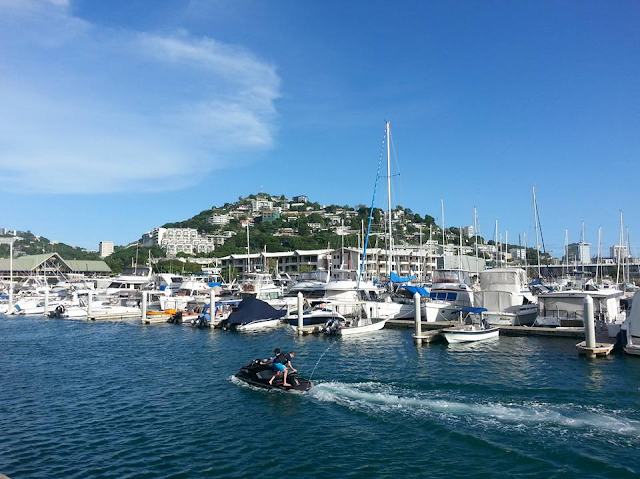Australia and Papua New Guinea share a unique and historically significant relationship. The Kokoda Trail and Bomana War Cemetery serve as powerful reminders of this connection.
This article sheds light on the relationship between Australia and Papua New Guinea.
 |
| (PNG INSIGHT PHOTO CC) |
Is Papua New Guinea part of Australia?
Papua New Guinea is not a part of Australia in terms of political governance. However, the historical and cultural ties between the two countries are strong.
Australia played a vital role in Papua New Guinea's development, especially during its colonial era, and the relationship has continued to evolve since Papua New Guinea gained independence in 1975.
Today, Australia remains Papua New Guinea's largest aid donor and trade partner.
The Significance of the Kokoda Trail
The Kokoda Trail holds immense historical importance for Australians. It served as the location for a crucial World War II campaign, where Australian troops, together with allies, fought to defend Papua New Guinea against the advancing Japanese forces.
The campaign fought between July and November 1942, was a turning point in the war in the Pacific and prevented the Japanese from reaching Australia.
The 96-kilometre Kokoda Trail, stretching from Kokoda Village to Owers' Corner, symbolises the endurance, sacrifice, and courage of Australian soldiers who faced treacherous conditions, disease, and fierce enemy opposition.
Today, the trail attracts thousands of trekkers each year, allowing them to experience the challenging terrain and gain a deeper appreciation of the historic campaign.
The Significance of the Bomana War Cemetery
Located near the capital city of Port Moresby, the Bomana War Cemetery is the largest war cemetery in the Pacific and holds a special place in the hearts of Australians. It serves as the final resting place for over 3,000 Commonwealth soldiers, including more than 700 Australians who lost their lives during the Kokoda campaign and subsequent operations.
The cemetery stands as a solemn reminder of the sacrifices made by those who fought to defend Australia and its interests. It is a place of reflection and commemoration, where Australians and others can pay tribute to the fallen and gain a deeper understanding of the cost of war.
The Significance of Papua New Guinea to Australia
Papua New Guinea, despite being an independent nation, remains an important part of Australia's regional relationships.
Geographically, Papua New Guinea is located just north of Australia, sharing a maritime border. This proximity makes Papua New Guinea a key partner for Australia in terms of security, economic cooperation, and regional stability.
(To find out how far Australia is from Papua New Guinea, click here)
Australia and Papua New Guinea engage in various bilateral initiatives, including trade, investment, and development cooperation. Australia provides significant aid to Papua New Guinea to support its economic growth, health, education, and infrastructure development.
According to the Department of Foreign Affairs and Trade, Australia's aid to Papua New Guinea in the 2021-2022 financial year was approximately AUD650 million. This aid is directed towards areas such as health, education, governance, and infrastructure development, aiming to improve the lives of Papua New Guineans and strengthen the partnership between the two nations.
Australia and Papua New Guinea Friendship
The Kokoda Trail and Bomana War Cemetery stand as powerful symbols of the shared history and enduring relationship between Australia and Papua New Guinea.
The sacrifices made along the Kokoda Trail during World War II are a testament to the courage and resilience of Papua New Guinean Fuzzy-Wazzy Angels and Australian soldiers.
As neighbouring countries, Australia and Papua New Guinea continue to collaborate, fostering mutual understanding and working together for a prosperous and secure future in the region.
FAQs
1. Is Papua New Guinea part of Australia?
No, Papua New Guinea is not part of Australia in terms of political governance. However, Australia and Papua New Guinea share a strong historical and cultural relationship.
2. What continent is Papua New Guinea in?
Papua New Guinea is located on the continent of Oceania. It is situated in the southwestern Pacific Ocean, just north of Australia.
3. How far is Papua New Guinea from Australia?
The distance between Papua New Guinea and Australia varies depending on the specific locations. The closest point between the two countries is around 150 kilometres (93 miles) across the Torres Strait, which separates the northernmost tip of Queensland, Australia, from the southern coast of Papua New Guinea.
4. What is the historical significance of the Kokoda Trail?
The Kokoda Trail holds immense historical importance for Australians. It was the location of a critical World War II campaign fought between July and November 1942. Australian troops, together with allies, defended Papua New Guinea against advancing Japanese forces. The campaign was pivotal in preventing the Japanese from reaching Australia and turning the tide of the war in the Pacific.
5. Why is Papua New Guinea important to Australia?
Papua New Guinea is strategically significant to Australia due to its geographical proximity. The countries share a maritime border and are important regional partners. Papua New Guinea plays a role in Australia's security, economic cooperation, and regional stability efforts. Australia provides substantial aid to Papua New Guinea, supporting its development, infrastructure, health, and education sectors. The relationship between the two nations continues to evolve and strengthen over time.


No comments:
Post a Comment